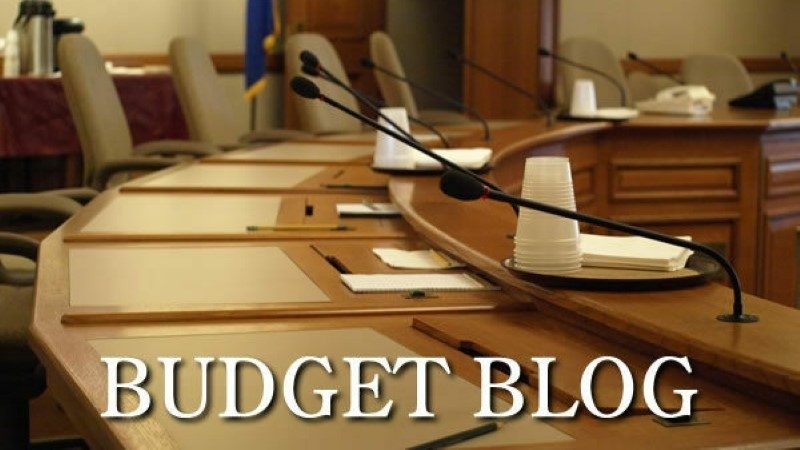Assembly Republicans today announced plans to again seek to reduce the state’s third-highest income tax bracket while pairing it with a new break on retirement income as part of a $2.9 billion cut.
They also rolled out plans to amend the Wisconsin Constitution to require a two-thirds majority to raise taxes.
Dem Gov. Tony Evers this summer nixed GOP proposals to cut the top two tax brackets, arguing the reduction was unfairly geared toward the wealthy.
Assembly Republicans today said reducing the third-highest tax bracket to 4.4 percent from 5.3 percent — which covers income between $36,840 to $405,550 for married couples filing jointly — is geared toward helping Wisconsin’s middle class.
>> WisPolitics is now on the State Affairs network. Get custom keyword notifications, bill tracking and all WisPolitics content. Get the app or access via desktop.
It would amount to a reduction of nearly $1 billion a year.
Joint Finance Committee Co-chair Mark Born, R-Beaver Dam, said the proposal is a “second chance to do the right thing” for the guv.
Evers’ vetoes left the state with a projected $4 billion surplus at the end of the 2023-25 biennium. The guv has suggested he would be open to pairing a tax cut with more state aid to child care providers.
But Born rebuffed the call.
“The Legislature is not interested in spending more money,” he said. “I know the governor is interested in spending more money. The money that’s left needs to be returned to the taxpayers.”
The guv’s office pointed to Evers’ veto message that raised concerns a tax cut as large as the one proposed today could result in the state and local governments having to pay back federal COVID-19 funds. The office also noted Evers wrote in his veto message after nixing the top two income tax reductions that “this approach is frankly fiscally irresponsible going forward and would put us in a position where we would almost certainly have to reduce funding and ongoing commitments to our schools, healthcare providers, local municipalities, and many other priorities in the next
budget.”
Born said Assembly Republicans haven’t discussed their plan with the guv’s office and have had preliminary discussions with Senate Republicans. Sen. Rachael Cabral-Guevara, R-Appleton, joined the Capitol news conference to tout the proposed break on retirement income. She said her Senate GOP colleagues will caucus early next month to discuss the proposal.
The piece of the proposal geared toward retirement income would expand an existing tax break. Now, those 65 and older may subtract up to $5,000 of payments or distributions from qualified retirement plans and accounts from their income tax bill. It applies to individuals with adjusted gross incomes of less than $15,000 for individuals and $30,000 for married couples.
The bill would allow up to $100,000 in payments to be subtracted annually from an individual’s taxable income for those 67 and older. For married couples where both spouses are at least 67, the combined subtraction couldn’t exceed $150,000.
Income already exempt from the state income tax — including Social Security, military earnings and income from certain public retirement systems — wouldn’t count toward the cap.
Meanwhile, the proposed constitutional amendment that would require two-thirds votes is now being circulated for support, said co-author state Rep. Amy Binsfeld, R-Sheboygan. It would have to pass back-to-back sessions before it could go to voters for a referendum.
The Evers administration warned the proposed tax cut could jeopardize $2.5 billion in federal COVID-19 funds sent to state and local governments in Wisconsin.
Yesterday, state Budget Director Brian Pahnke wrote a new memo for the guv and DOA Secretary Kathy Blumenfeld projecting the state could reduce taxes in 2023-24 by $113 million and by $319 million in 2024-25 before having to possibly pay back federal COVID-19 dollars.
Under the American Rescue Plan Act, states may not use the funds to directly or indirectly offset a reduction in net tax revenue. States that violate the requirement must repay money that was earmarked for state and local governments in an amount equal to the reduction in net tax revenue.
Pahnke wrote in the memo the administration believes the U.S. Treasury’s rules don’t allow the state to include its current $4 billion surplus in calculating how much it can cut taxes before triggering the recoupment provisions.
The Legislative Fiscal Bureau noted the provision in a June budget paper prepared for the Joint Finance Committee. The nonpartisan agency wrote it had asked the Treasury Department for clarification on how the state’s surplus was factored into the equation, but hadn’t received a response.
The agency also noted it was unclear whether the recoupment provision was enforceable after several court rulings. It also pointed out it was unaware that any state determined to be in violation of the Treasury rule had been subject to recoupment efforts.
Read the bill here.
Read the memo here.
Read the LFB paper here.



